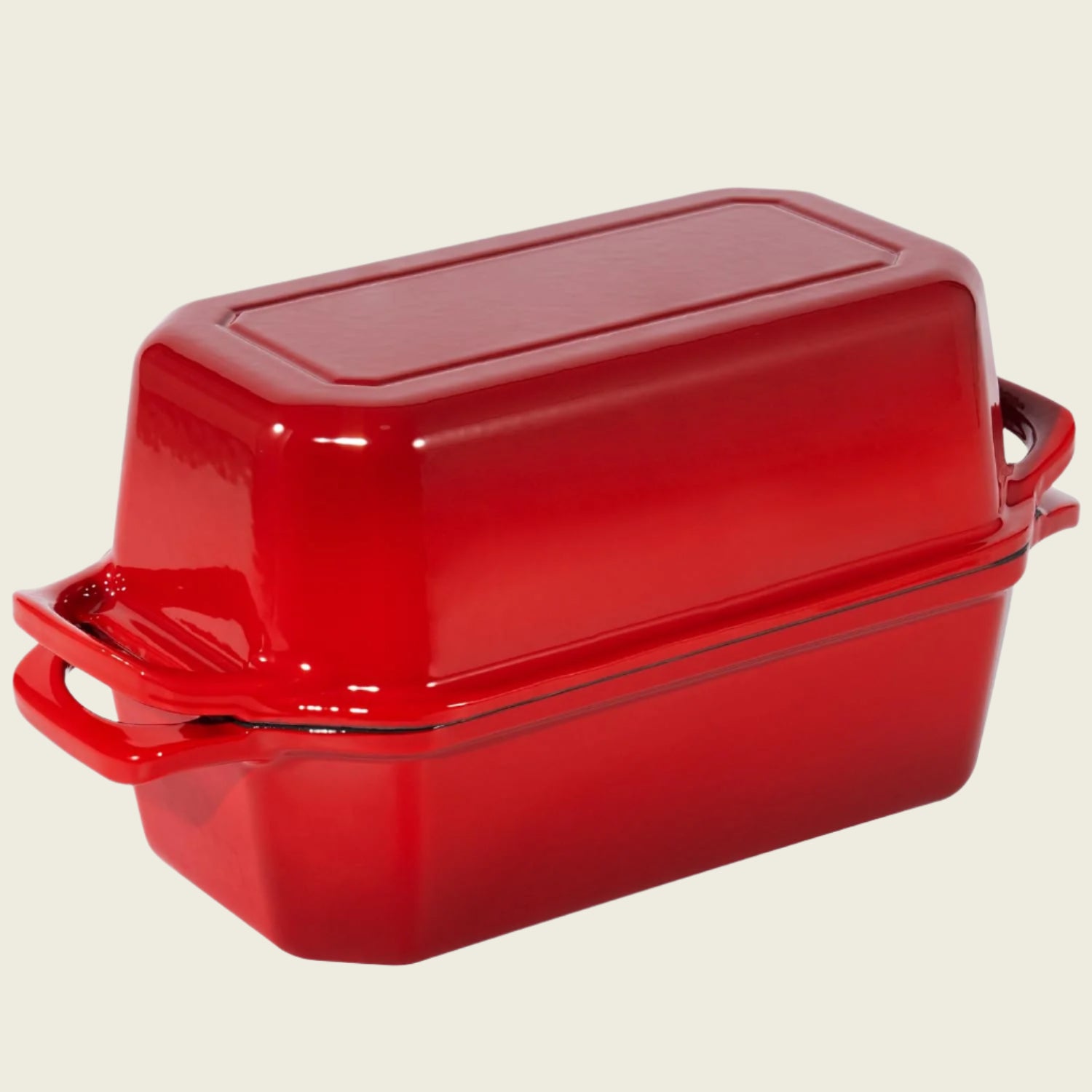The Best Dutch Oven Size for Sourdough - And Why It Matters
Share
Choosing the right Dutch oven for sourdough baking can make a noticeable difference in your results. From oven spring to crust texture, the size and shape of the pot matter more than you might think. Here’s a straightforward guide to help you find the best fit.
Why Use a Dutch Oven for Sourdough?
A Dutch oven creates the ideal environment for sourdough bread. The heavy material retains heat evenly, while the tight-fitting lid traps steam during the early stage of baking. This steam is crucial—it keeps the dough surface moist, allowing the loaf to rise fully before the crust sets. The result is a beautiful, golden crust and an open, airy crumb.
The Ideal Size
For most home bakers using about 500 grams of flour (the standard for a typical sourdough boule), a 5-quart (or 5-liter) round Dutch oven is the sweet spot. It’s large enough to give the dough space to rise, but small enough to concentrate steam around the loaf.
If you prefer baking oval-shaped loaves—bâtards—look for a 5- to 7-quart oval Dutch oven. Matching the pot’s shape to the loaf supports better rise and more even crust development.
Why Size Matters
A pot that's too large allows steam to dissipate too quickly, which can lead to a flatter loaf with a duller crust. Too small, and the dough may hit the sides or lid, affecting its shape and rise. A well-fitted pot provides enough vertical and horizontal room without wasting steam.
Depth also plays a role. Look for a Dutch oven that's at least 4 to 5 inches (10 to 12 cm) deep. This allows for proper oven spring without the loaf pressing against the lid.
A Quick Fit Test
Try placing your proofed dough (in its banneton or on parchment) into the cold pot before baking. There should be about an inch of space all around. If it's tight before baking, it'll be even tighter once the loaf expands.
Material Matters
Cast iron—bare or enameled—is the gold standard. It holds heat exceptionally well and withstands the high temperatures required for sourdough.
-
Enameled cast iron: Easier to clean, doesn’t require seasoning, and often has light-colored interiors that help monitor browning.
-
Bare cast iron: Durable and versatile, but requires regular seasoning to prevent rust and maintain non-stick properties.
There are also combi cookers, where the lid doubles as a shallow base. These are especially easy to load and ideal for sourdough beginners.
Handle and Knob Safety
Whatever model you choose, make sure it’s fully oven-safe, including the handle and lid knob. Many pots come with plastic knobs that can melt at high temperatures, so opt for metal knobs or replace plastic ones if needed.
Alternatives and Budget Options
You don’t need to splurge to bake great sourdough. More affordable Dutch ovens can still do the job well, although some may be more prone to enamel wear over time. Use parchment paper if you notice any cracking or crazing.
If cast iron is too heavy or not an option, consider lighter enameled aluminum pots or use a baking stone with a steel bowl or roasting pan inverted over the loaf to trap steam.
Tips to Improve Your Bake
-
Preheat the Dutch oven: This maximizes oven spring. Be careful not to introduce cold liquids to a hot pot, which can cause thermal shock.
-
Avoid burnt bottoms: Place a baking sheet or pizza stone on a lower rack to diffuse direct heat.
-
Tough crusts: Cool the loaf on a wooden board instead of a wire rack to slightly soften the base.
-
Cleaning: A baking soda and vinegar paste, or a gentle abrasive like Bar Keepers Friend, can help remove stubborn stains inside enameled pots.
Final Thoughts
A 5-quart round Dutch oven is a solid choice for most sourdough bakers. If you regularly bake different shapes or batch sizes, consider adding an oval option or a combi cooker. The right pot can elevate your baking game, but more importantly, it should fit your routine and style. Focus on what you bake most, ensure your pot has oven-safe features, and enjoy the process of creating bread that looks and tastes incredible.
